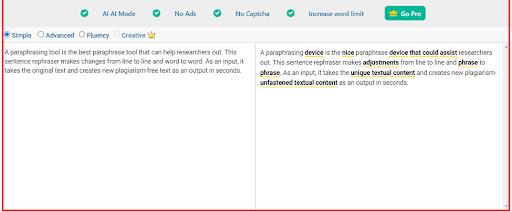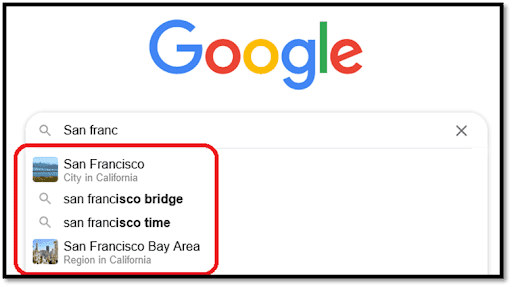Proofreading is a vital editorial and content creation process. So, how should content marketers tend to it?
Did you know that around 84% of companies depend on a content marketing strategy? In research conducted by SEM rush, around 1250 out of 1500 companies relied heavily on content creation- and content marketing in general.
This tells us the importance of content creation and why its quality is necessary. So, today, we’ll talk about proofreading for content marketing experts. While this is different from proofreading for traditional content, it has a few common denominations. So, let’s begin.
What is Proofreading?
Table of Contents
- What is Proofreading?
- Why Is Proofreading Important? 3 Important Factors
- 11 Proofreading Tips For Modern Content Marketers
- 1. Proofread Subjectively – Separate The Written Text From The Writer
- 2. Proofread Backwards – Ludicrous, But Effective
- 3. Read Punctuation To Punctuation
- 4. Read The First Word Of Every Paragraph
- 5. Readability
- 6. Paraphrase To Increase Variable Words
- 7. Get Names & Locations Right
- 8. Know When To Use Apostrophes or Hyphens—And When Not To
- 9. Verify Spellings – Google Is Your Best Friend
- 10. Use A Grammar Checker To Avoid Spelling Errors
- 11. Don’t Forget About SEO
- Conclusion
The basic definition of proofreading is to rid a written document of any errors. But in content marketing, proofreading detects and corrects written document errors. This is a very important step that should be taken before publishing a blog article.
It can also be done after the said document has been published. Specifically, correct typos or mistakes not detected during the first proofreading. Thus, proofreaders are editors who specialize in reviewing text for errors and making corrections to it.
They are sometimes called copy editors or line editors. This term originates from the fact that they edit copy line by line as opposed to working on larger blocks of text at a time. However, proofreading isn’t only subject to correcting grammatical or spelling mistakes.
Instead, proofreading in content marketing is important to:
- Fix content structure
- Improve text’s readability
- Finding the right words for backlinking
- Achieving a specific content tone
- Finding newer words
- Replacing unwanted or fluff words
- Ensuring the adequate presence of targeted keywords
- Fixing headings, subheadings, et cetera
So, if you were to sum it up, proofreading in content marketing is more about overall quality. While it deals with fixing grammatical errors and issues, its primary purpose is ensuring the content’s quality is top-notch.
Therefore, since content today is made to cater to specific marketers and audiences, it must cater to these ideas thoroughly. That’s why proofreading in content marketing is more than just ensuring grammatical quality.
However, it’s also important to note that proofreading is the last step in the whole writing cycle. This happens before publication; therefore, it’s also known as quality assurance in many places around the globe.
Since the purpose is to achieve the specific qualifications required by the content’s objective, a proofreading process must adhere to these goals.
Why Is Proofreading Important? 3 Important Factors
We’ve already established that proofreading is the process of reviewing a written work. This helps procedure helps identify and correct errors in spelling, punctuation, word choice, and grammar. Thus, it is also called “copy editing” or “substantive editing.”
Proofreading is important because it helps identify errors in a given text. Errors can be anything from typos to misspellings that can be easily fixed with a quick proofread. It also helps identify mistakes in grammar that might not have been identified by the writer or editor of the text.
However, proofreading serves a greater purpose in the world of content marketing/writing. This includes things like:
- The quality of overall content, whether it’s suitable for an audience or not;
- Ensuring the incorporation of the right keywords for SEO;
- Ensuring the structure of content suitable for a platform, i.e., WordPress or any other CMS;
- Structural editing to ensure thorough readability, such as headings, subheadings, etc.
In addition, proofreading helps to ensure that there are no discrepancies between different versions of the same document. But, to sum it all up, here are three adamant reasons proofreading is vital in content marketing:
1. Ensuring Technicalities
Marketing content is full of technicalities. To achieve specific results, long-tail keywords are essential, and if they’re missing from your content, then it won’t achieve any sort of SEO rank. Understand this, 67.6% of clicks go to the first 5 organic results in Google.
Now, if your content doesn’t tend to SEO technicalities, then it’s never going to be one of those five results. Thoroughly proofreading and ensuring a technical SEO checklist can put your mind at ease. Moreover, it can help ensure that your content meets all the technical requirements.
2. Quality Assurance
Let’s be real; the primary purpose of proofreading is to ensure quality. Proofreading is meant to deal with that, whether it’s about using the right punctuation, ensuring proper spelling, or the right structure. However, the quality of content is also about:
- Ensuring optimal paragraph and sentence length
- Ensuring readability or removing unreadable words
- Improving the tone according to the audience
These quality-assurance factors are surely one of the key essentials of proofreading. That’s what makes it a necessity for any content marketer today.
3. Marketing Objectives
The content’s marketing objective could be one of many. For instance, content on the blog is supposed to spread awareness, garner organic clicks, bring in traffic, et cetera. However, content on social media is supposed to connect with an audience or engage them directly.
These are marketing objectives, and they can change or shift according to the brand’s requirements. But, what doesn’t change is that you need proofreading to ensure your content reaches all these marketing objectives.
11 Proofreading Tips For Modern Content Marketers
Proofreading seems like a straightforward process, but it’s a bit complicated for content marketers. These 11 tips will address the key factors a content marketer must tend to while proofreading. So, let’s get started.
1. Proofread Subjectively – Separate The Written Text From The Writer
Proofreading subjectively can be difficult. As a writer, you might think that removing or editing anything from your content is a waste of your effort. However, doing that is much better than your content not having any effect at all.
So, separate yourself from your written content and proofread subjectively. This will allow you to look at your content in a much more indifferent light. It will enable you to look at things in a different light and fix errors or issues quite conveniently.
2. Proofread Backwards – Ludicrous, But Effective
A lot of professionals proofread content backwards, and it does sound a bit ludicrous. However, there’s a good reason behind that. Now, reading forward means that you’re engaged with the narrative, story, argument, or whatever you want to call it.
Now, reading backwards gives you an objective approach. Instead of the narrative, you’re focused on the words, the spellings, punctuations, etc. This gives you a better grasp of the words you’re reading rather than the subject, allowing for effective correction.
3. Read Punctuation To Punctuation
Another effective technique is to read from one punctuation to the next. When you read from one sentence to the next, you get engaged in what the writer is trying to tell you. This way, your mind might mask the issues present within the structure, spelling, etc.
However, focusing on each punctuation gives you a much better grasp of what’s being said rather than why it’s being said. This objective approach ensures that you focus on the words in front of you, between the two punctuation marks.
4. Read The First Word Of Every Paragraph
Redundancy and fluff are dangerous in any content marketing text. While they can be overlooked in some cases, they should be removed in most cases. So, what happens if your text has too many sentences or paragraphs starting with words like:
- However, and/or but
- Nevertheless and/or nonetheless
- Therefore, and/or but
If there’s too much of something, it’ll become redundant and cause the reader to lose interest. As a content marketer, you cannot afford to let that happen. Therefore, it’s important that you read the first word of every sentence, paragraph, or section to ensure it’s not repetitive.
5. Readability
Readable content performs the best out of any other type. Even if your content is chockfull of information, it’s not going to make an impact if there’s no one reading it. Remember, Google takes audience retention into account when indexing websites.
One way to ensure that is by writing readable content. So, how do you proofread for it? Ask these questions when proofreading:
- Is this content easy to read?
- Are the words too complicated?
- Is it informative or filled with industry jargon?
- Is it actionable or theoretical?
If the negatives outweigh the positives, then the content surely isn’t readable. Remember, readable content is not only easy to peruse but also to grasp and remember. It should flow off the reader’s tongue like water.
6. Paraphrase To Increase Variable Words
Proofreading helps you identify mistakes, but editing is where the real work begins. So, what happens if you find common problems like:
- Redundancy
- Fluff words
- Non-engaging words
The simple idea would be to rewrite anything that features those problems. However, the better idea is to paraphrase to increase the variation of words. Here’s an example:

What exactly is the problem here? The content is readable, but it’s not engaging and tends to be repetitive in some sentences. So, a simple fix is to paraphrase to use variable words.
Here, the paraphrasing tool has changed a few words to their variables/synonyms. But, despite AI working behind this tool, you can learn a few things from it, such as:
- It removed redundant words
- It changed “as well” to “should also,” which is much more readable
These two factors alone can help you ensure the quality of your content. Therefore, you can use a simple paraphrasing tool to achieve the desired results.
7. Get Names & Locations Right
A lot of times, content tends to have names and locations that aren’t commonly spelled the same way. For instance, there are a few ways of spelling names, like:
- Stephen, Steven, or Stefan
- Amy, Aimee, Emmy
- Brendan, Brenden, Brandon
So, ensure you correct the variant and use the right spelling. The same goes for locations such as:
· Ave, or avenue
There are times when one is suitable, and there are occasions when the other is. So, make sure you get names and locations correct in your writing when proofreading.
8. Know When To Use Apostrophes or Hyphens—And When Not To
Using an apostrophe can make a sentence or render it completely wrong. A lot of times, apostrophes are needed, but many times they’re not. Here’s a common mistake:
“You should close it’s door.”
The problem here is the wrong “its.” The correct sentence would be:
“You should close its door.”
Now, what exactly does an apostrophe do? Here’s what you need to remember:
- A possessive pronoun = its
- Contraction meaning = it’s
So, “it’s” your responsibility to get the two of them correctly. The same goes for when or when not to use hyphens. Here’s an example of not using it and rendering the expression totally incorrect:
The content was once in a lifetime
Instead, it should have been:
The content was once-in-a-lifetime
Therefore, ensure you’re using the right apostrophes or hyphens when proofreading.
9. Verify Spellings – Google Is Your Best Friend
Spelling verification is persistent in MS Word or Google Docs. However, you can always try using Google if you’re still unsure about something. It’s your best friend in finding the right spelling, as the suggestions might correct it for you, such as:

San Francisco is one of the most commonly misspelled city names. So, using Google helps us identify the right spelling. You can do the same when you’re proofreading and if you’re unsure of any spellings.
10. Use A Grammar Checker To Avoid Spelling Errors
Proofreading for quality assurance is important, but proofreading for grammatical errors is very 1990s. Nowadays, you can use online tools to avoid spelling errors or find them.
This will help you save time and help you focus on other key essentials of proofreading. So, you can try to use a grammar checker. You can often use the ones built within MS Word or Doc.
11. Don’t Forget About SEO
When you’re perusing your content, ensure you’re tending to SEO requirements. As a content marketer, it’s important that your content finds visibility in search engines and attracts organic traffic.
Therefore, when proofreading, ensure you’re tending to keyword inclusion, keyword density, backlinks, anchor text, subheadings, keyword placement, etc.
Conclusion
These are some of the vital proofreading tips for content marketers today. It will help you ensure grammatical quality and ensure that your content is ready for SEO and other content marketing essentials.

Daisy is a writer who has written blogs about business, SEO, education, and technology. She is a prepared digital marketer with over 5 years of marketing experience and has led the way in digital marketing Strategies with many organizations and high-quality brands to generate more revenue through web-based promotional systems and implementation has been compiled.
